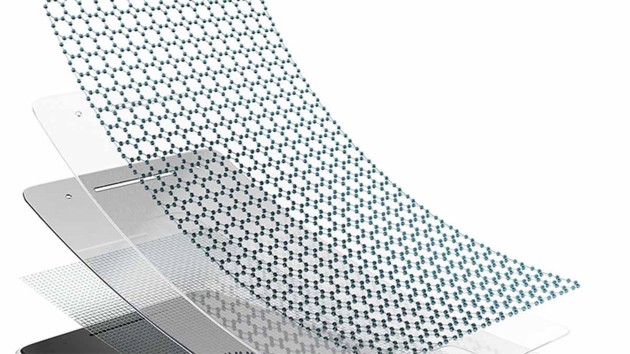Focus |
Collections
Filters
-
Collection Type
-
-
Focus |
 2D materials
2D materials
The development of atomically thin layers of van der Waals bonded solids with interesting optoelectronic properties has opened up new possibilities for exploring 2D physics and designing miniature photonic devices such as optical modulators, light emitters and saturable absorbers.
Image: Iaremenko -
Focus |
Spin–orbit interactions
The ability to induce coupling between the spin angular momenta and orbital angular momenta of photons is creating new opportunities for preparing unique states of light and performing new forms of optical manipulation. This focus describes the theory and mechanisms behind the coupling and a discussion of the potential applications.
-
Focus |
Maxwell anniversary
2015 marks the 150th anniversary of the formulation of Maxwell's equations which lie at the heart of our understanding of electromagnetism and the behaviour of light waves. This focus brings together a collection of articles charting the development, impact and modern day use of Maxwell's equations.
-
Focus |
Nanophotonics and Metamaterials
The creation of photonic materials, circuitry, devices and probes that act on the nanoscale is yielding new opportunities for controlling light in the sub-wavelength regime. The result could be higher density information storage and processing, and improved sensing and imaging capabilities.
-
Focus |
Performance of photovoltaics
While power generation using silicon solar panels has steadily been increasing over the years, alternative materials that could compete with this technology in terms of efficiency and module costs are intensely being investigated. Yet, to allow for a fair assessment of new photovoltaic technologies, characterization of light-conversion performance should be conducted according to commonly agreed basic rules. This joint web focus collects a series of opinion pieces, recently published in Nature Materials,Nature NanotechnologyandNature Photonics, that discuss the importance of reporting accurate device performance.
-
Focus |
Attosecond photonics
Attosecond photonics, currently one of the most promising branches of modern photonics, is progressing at an extremely rapid pace. Although still in its infancy, it has already captured the imagination of the scientific community with its promise of enhancing our understanding of ultrafast phenomena of direct relevance to life, technology and potentially medicine.
-
Focus |
Fibre Lasers
Thanks to recent developments, lasers based on fibre media with gain are simple, reliable and cost effective. Topics covered in this focus include high-power sources, ultrafast fibre lasers, industry's perspective on the developments in the field over the past decade, applications such as biomedical imaging, and nanotube- and graphene–based saturable absorbers for fibre lasers
-
Focus |
Terahertz Optics
This Focus Issue describes the interaction mechanism between terahertz radiation and matter. Topics covered include terahertz sources, on- and off-resonant control using intense terahertz pulses, quantum cascade lasers, superconducting terahertz emitters and terahertz plasmonics.
-
Focus |
Disorder
The issue describes how light interacts with disordered, aperiodic and strongly scattering media to realize a variety of interesting optical phenomena. Topics covered include photonic quasi-crystals, random lasing, Anderson localization and hyper-transport of light as well as potential applications in imaging and next-generation light sources.
-
Focus |
Plasmonics
Plasmonics takes advantage of the coupling of light to charges like electrons in metals, and allows breaking the diffraction limit for the localization of light into sub-wavelength dimensions enabling strong field enhancements. This Focus Issue covers some of the recent developments in the field including, non-linear plasmonics, acousto-magneto effects, plasmons on graphene and bio-sensor applications.
-
Focus |
Mid-infrared photonics
The mid-infrared spectral region of 2-20 μm contains strong characteristic vibrational transitions of many important molecules as well as two atmospheric transmission windows of 3-5 μm and 8-13 μm, which makes it crucial for applications in spectroscopy, materials processing, chemical and biomolecular sensing, security and industry. This Focus Issue covers recent developments in sophisticated laser technologies such as quantum cascade lasers, fibre lasers and frequency combs, and discusses how plasmonics can be exploited in the mid-infrared regime.

 PT symmetry
PT symmetry